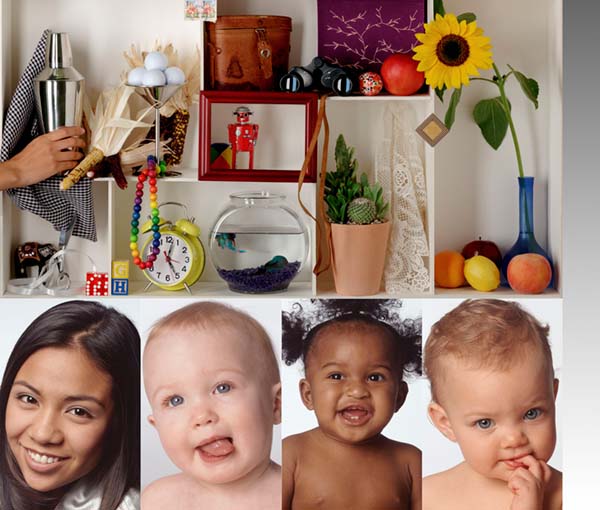Colour 102: Coping with colour casts
Page 1 of 3. Version 1.1, ©2012 by Dale Cotton, all rights reserved.
More than a decade into the digital photography era achieving colour neutrality is as simple as clicking on a "neutral" portion of a digital photo ... or so our software would have us believe. Strangely, few pictures have a "neutral" region, unless you count a blown highlight as being neutral white, but that unfortunately isn't acceptable. Colour neutrality out of the camera depends on our either setting a custom white balance before taking the picture or on the sophistication of the white balance algorithm built into the camera's imaging engine.
Looking at the world through rose-coloured glasses is generally taken to be at least a symbolic improvement; presumably then, looking at the world through green, blue, or grey tinted glasses would be negative. Subtle colour casts that most people can't consciously detect make a huge difference in how appealing an image is to the viewer. Even a perfectly accurate white balance for a picture taken in the bluish light of mid-afternoon is a decided downer.
But anyone who works extensively with photographs is frequently dealing with colour cast removal, whether it's correcting an image taken with an older digital camera, or with a film camera, or by a digital novice who used the wrong white balance, Unless you opt to work in b&w, photography pretty much forces you to become an expert in colour work. But before you can actually fix colour casts you first need to learn to see then.
Learning to identify casts
Your monitor: most LCD computer monitors have a native colour temperature of 6500K or very close to it. This is the industry standard and is what you want to be using to view the following pictures. If you have a CRT or have deliberately changed the calibration of your LCD away from 6500, you won't be seeing the same colours I'm describing below.
White balance

Fig. 1: White balance comparison
Fig. 1 shows a scene taken at 5:30 PM in early July when the light had a colour temperature of 4950K. In comparison sunlight measured at the horizon is 5000K and vertically overhead is 5500K. Clicking on the various buttons takes you to cooler/bluer lighting as the numbers get smaller, and to warmer/yellow-orangier lighting as the numbers get larger. The 5500K version could be said to be neutral in that our eyes most readily identify whites seen in 5500K light as being pure white. But 4950K is what the camera recorded as being the actual colour temperature of that scene at that particular time of day.
WB fussiness: to my eye neither the 4950K nor the 5500K look quite right. It's a true blue-sky day and the shadows of the scene tell us the sun was a little less than half way between overhead and on the horizon, which agrees with the 5:30 PM timing for a temperate zone latitude at that time of year. So I added a button for a colour temperature that's a little less than half way between 5000K and 5500K – namely, 5200K – and that looks spot-on to me. I've never approached a WB problem this way before, but if it works...
White balance issues arise in digital photography when there is a mismatch between cues within the scene, such as daylight shadow length, and the white balance setting recorded by the camera. In daylight, tungsten lighting, halogen lighting, and full-spectrum fluorescent lighting correcting for white balance issues for pictures taken in these lights is often simply a matter of moving the white balance slider in your favourite image editing software. (Note that for such cases I've talked about finding a neutral or "correct" white balance, but deliberately using a warmer white balance is one way to make a picture more appealing.) Pictures taken in mixed lighting and under non-full-spectrum fluorescents will have colour problems that go beyond what a white balance slider can do, so time to move on to the broader subject of how colour can go wrong in the most general terms:
Primary/secondary colour casts

Fig. 2: Colour cast comparison
The studio shot shown above in Fig. 2 from PCI is likely familiar to anyone who's done much photography this past decade. I've cropped off the top portion to save on screen space, Below it are 21 buttons that you can click on to move it away from its neutral state.
Colour theory tells us that any visible colour can be produced by mixing together varying proportions of only three primary colours: red, green, and blue. Not only is this the theory; it's also the technology used in slide film and in digital cameras. In fact, the very display you're using to read this tutorial uses a tight cluster of tiny red, green, and blue lights to produce each dot (pixel) that you see. Further: mixing red plus green creates yellow, mixing green plus blue creates cyan (essentially aqua), mixing red plus blue creates magenta (a shade of purple). Yellow, cyan, and magenta are therefore secondary colours, since they can be created from (two) other colours.
With that in mind and returning to Fig. 2, the red minus button subtracts 5% of each pixel's red value, the red minus minus button subtracts 10%, and the red minus minus minus subtracts 20%. In each case the missing redness causes the image to have a cyan (blue-green) colour cast, since both the blue and green portions of the image's colours are now relatively stronger.
The red plus button adds 5% to the red value, the red plus plus adds 10%, and the red plus plus plus adds 20%. In each case the image has a red colour cast, since extra red has been added.
Similarly, the green minus set of buttons introduce a magenta (reddish purple) colour cast; the green plus buttons add a green cast; the blue minus buttons add a yellow cast, and the blue plus buttons add a blue cast. Notice however that none of the blue minus buttons match the WB+ version, because sunlight is yellow-orange, not pure yellow; and none of the blue plus buttons match the WB- version because sky blue is not the same as the new-fangled violet-blue in the RGB colour model.
In order to learn to see pictures in terms of colour casts I suggest clicking on the +++ and --- buttons under Fig. 2 above, perhaps alternating with the Neutral button, until you begin to get a feel for the visual effect from adding or taking away a colour. Next, do the same with the ++ and -- buttons, until you can see the changes they invoke. The single + and single - changes are subtle – don't expect to be able to distinguish between them on the first day.
In fact, if this is new material for you, I'd say not to expect to acquire the necessary training in any short period of time. It takes a few minutes to read this section, but it could well take repeated sessions working with the Fig. 2 buttons to really get up to speed.

Fig. 3: Colour cast drill
Fig. 3 takes a different picture and provides buttons that introduce the same colour casts as in Fig. 2, except that buttons for the subtle single + and single - casts are not provided, and the order of the buttons has been srambled. So there is one button for each of the red, green, and blue +++, ---, ++, and -- variations; your job is to make a list of which cast belongs to which button. Even without resorting to the single + and single - variations, I think you'll find this exercise to be quite a challenge.